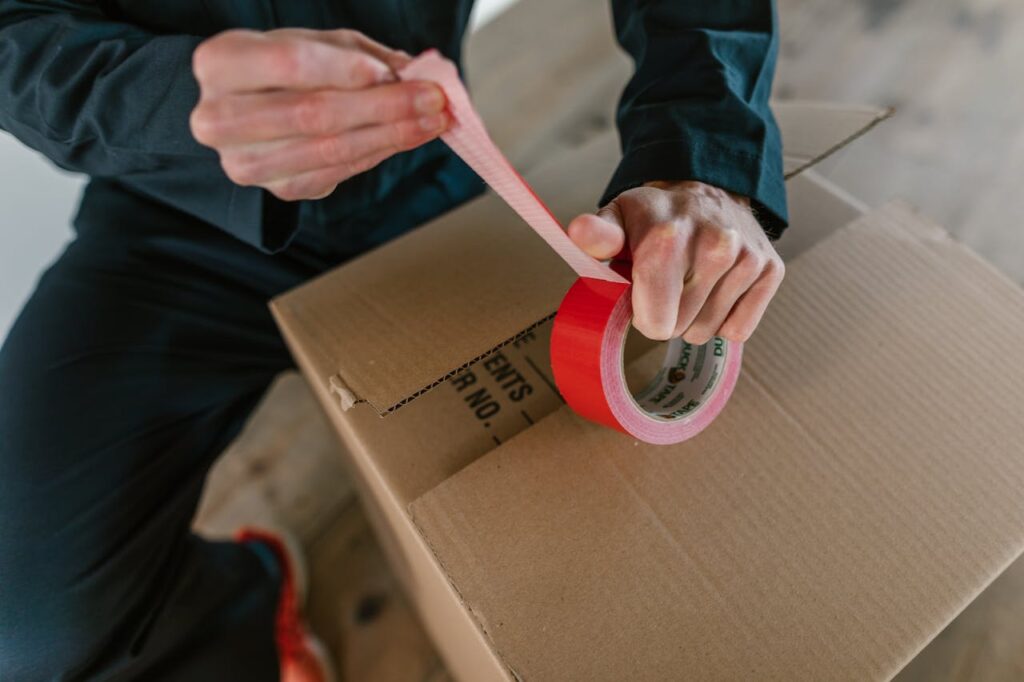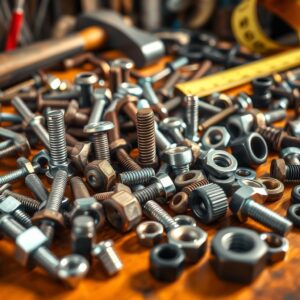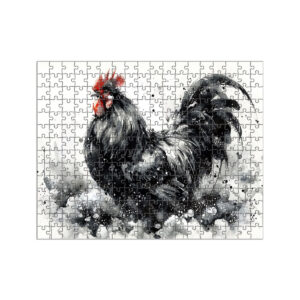
Explore & Play
Discover interesting topics and solve the accompanying crossword puzzle.
Adhesive Crossword | Adhesives From Natural Resins to Modern Epoxies
Table of Contents
Adhesive Crossword
You can either fill in the crossword puzzle directly on this page or click the button in the bottom right corner to print it for free.

History and Evolution of Adhesives: From Natural Gums to Modern Epoxy
Adhesives have been a crucial part of human development, evolving from simple natural substances to the sophisticated products we use today. From ancient civilizations using tree sap to modern industries utilizing epoxy and polyurethane, adhesives have shaped construction, art, and even daily life. In this article, we’ll explore the fascinating history and evolution of adhesives, showcasing the wide variety of types and their applications. Plus, you’ll get a chance to test your adhesive knowledge with our Adhesive Crossword Puzzle!
I. Ancient Adhesives: Natural Gums and Early Innovations
The use of adhesives dates back thousands of years, with some of the earliest forms of bonding agents being derived from natural sources. Ancient civilizations relied heavily on the resources available in their environments, leading to the discovery and utilization of natural gums as adhesives.
A. Early Discoveries
Natural gums, such as those obtained from the sap of trees, were among the first adhesives used by humanity. The ancient Egyptians, for example, utilized gum arabic, a plant-derived resin, as an adhesive in the construction of their monumental structures and in mummification processes. This natural adhesive not only provided a strong bond but was also resistant to moisture, making it ideal for various applications.
B. Techniques and Applications
The techniques used by ancient craftsmen varied from region to region. In some cultures, they would mix natural gums with other substances, such as powdered limestone or clay, to enhance the adhesive properties. These mixtures were often used in pottery and woodworking, where durability was essential.
Evidence of the use of natural adhesives can also be found in archaeological excavations. Tools and artifacts from prehistoric times reveal that early humans used these substances to attach stone blades to wooden handles, creating efficient tools for hunting and gathering.
C. Cultural Significance
Natural adhesives played a crucial role not only in practical applications but also in cultural practices. In ancient rituals, adhesives were sometimes used in the creation of ceremonial objects and artworks, demonstrating the significance of bonding agents in early human societies. The development of these early adhesives laid the groundwork for future innovations, marking a significant step in the evolution of materials science.
II. The Middle Ages: Animal-Based Adhesives and Innovations
As society progressed into the Middle Ages, the demand for stronger and more reliable adhesives increased, leading to innovations that reflected the changing needs of the time. Animal-based adhesives became prominent during this era, showcasing advancements in both technology and application.
A. Introduction of Animal-Based Adhesives
Animal glues, made from the collagen found in animal bones and hides, emerged as a popular choice for various applications. These adhesives were particularly valued for their strong bonding properties and versatility. Craftsmen began to explore different methods of extracting and processing these glues, leading to improvements in their quality and effectiveness.
B. Methods of Production
The production of animal-based adhesives typically involved boiling animal parts, such as bones, hooves, and hides, to extract the collagen. This process resulted in a gelatinous substance that could be further refined. The glue was then dried into sheets or powders, which could be reactivated by heating with water when needed.
This method not only provided a reliable adhesive but also allowed for greater control over the adhesive’s properties, enabling artisans to tailor their bonding agents to specific tasks. For example, thicker glues were used for heavy woodworking projects, while lighter versions were employed in fine crafts such as bookbinding.
C. Expanding Applications
The use of animal-based adhesives became widespread across various industries, including woodworking, textiles, and paper. They were essential in the construction of furniture, where strong joints were necessary for durability. In the textile industry, these adhesives facilitated the production of intricate designs and patterns.
Moreover, the art of bookbinding flourished during the Middle Ages, with animal-based adhesives playing a crucial role in the preservation of literature. The ability to create sturdy bindings allowed for the production of books that could withstand the test of time, contributing to the preservation of knowledge.
D. Cultural Impact
The advancements in adhesive technology during the Middle Ages also influenced artistic expressions. Artists and craftsmen utilized animal glues in their creations, enabling them to experiment with new techniques and materials. This period marked a significant transformation in how adhesives were perceived, shifting from mere functional substances to essential components of craftsmanship and art.
III. The Industrial Revolution: The Rise of Synthetic Adhesives
The Industrial Revolution, spanning the late 18th to the early 19th centuries, marked a transformative period in manufacturing and technology. With rapid advancements in chemistry and materials science, the development of synthetic adhesives began to take shape, revolutionizing how materials were bonded together.
A. The Shift from Natural to Synthetic
Prior to the Industrial Revolution, adhesives were primarily derived from natural sources such as plants and animals. However, as industrial processes evolved, the limitations of natural adhesives became apparent. They were often inconsistent in quality, sensitive to environmental conditions, and limited in their range of applications.
In response to these challenges, chemists began experimenting with synthetic compounds, leading to the creation of new adhesive materials. The advent of synthetic adhesives allowed for stronger, more durable, and more versatile bonding agents, which were essential for the rapidly growing industries of the time.
B. Key Innovations
One of the most significant developments during this period was the introduction of rubber-based adhesives. Invented in the mid-19th century, rubber adhesives offered excellent flexibility and durability. This innovation paved the way for their use in a variety of applications, including footwear, textiles, and packaging.
Additionally, the invention of phenolic resins in the early 20th century marked a significant leap forward in adhesive technology. These synthetic resins provided strong bonds and were heat-resistant, making them ideal for industrial applications, such as in the automotive and aerospace industries.
C. Expansion of Applications
As synthetic adhesives became more prevalent, their applications expanded dramatically. They found their way into a variety of industries, including construction, automotive, and electronics. The ability to bond dissimilar materials, such as metal to wood or plastic to glass, opened up new possibilities for design and manufacturing.
In the construction industry, synthetic adhesives revolutionized building techniques. They were used in laminates and engineered wood products, providing strong structural integrity while reducing the need for traditional fasteners. This not only improved efficiency but also contributed to the overall strength and longevity of structures.
D. Impact on Society
The rise of synthetic adhesives during the Industrial Revolution had far-reaching implications for society. The increased efficiency and productivity in manufacturing led to economic growth and job creation. Moreover, the ability to create more durable products enhanced consumer goods, improving the quality of life for many.
Synthetic adhesives also played a crucial role in innovations such as packaging, enabling the development of lightweight, moisture-resistant materials that facilitated global trade and distribution.
IV. Modern Adhesives: Diverse Applications and Technological Advancements
In the contemporary era, the adhesive industry has continued to evolve, driven by advancements in technology and the demand for specialized bonding solutions. Modern adhesives are characterized by their diversity in formulation and application, catering to a wide range of industries and needs.
A. Types of Modern Adhesives
Today, a myriad of adhesive types exist, each designed for specific applications. Some of the most common include:
- Epoxy Adhesives: Known for their exceptional strength and durability, epoxies are widely used in construction, automotive, and aerospace applications. They can bond a variety of materials, including metal, plastic, and glass, making them ideal for demanding environments.
- Polyurethane Adhesives: These adhesives are valued for their versatility and flexibility. They are commonly used in the construction and woodworking industries, providing strong bonds that can withstand environmental changes.
- Acrylic Adhesives: Known for their fast curing times and strong adhesion to various surfaces, acrylic adhesives are popular in the automotive and manufacturing sectors. They offer excellent resistance to heat and chemicals.
- Hot Melt Adhesives: Used extensively in packaging and woodworking, hot melt adhesives are thermoplastic materials that are applied in a molten state and solidify upon cooling. Their rapid bonding capabilities make them ideal for high-speed production environments.
B. Innovations in Adhesive Technology
Technological advancements have led to significant innovations in adhesive formulations. Researchers are continually developing new materials that enhance performance, such as pressure-sensitive adhesives that bond upon contact and specialty adhesives that cure under specific conditions (e.g., UV light or heat).
Furthermore, the rise of environmentally friendly adhesives has gained traction, with an emphasis on sustainability and reducing the ecological impact of adhesive production. Bio-based adhesives, derived from renewable resources, are emerging as viable alternatives to traditional synthetic adhesives, appealing to eco-conscious consumers and industries.
C. Applications Across Industries
Modern adhesives have found applications in a diverse array of industries, including:
- Automotive: Adhesives are increasingly used in vehicle manufacturing, providing lightweight alternatives to traditional fastening methods while enhancing aerodynamics and fuel efficiency.
- Construction: Adhesives are crucial in the construction of buildings, bridges, and infrastructure, providing strong bonds for various materials and contributing to structural integrity.
- Electronics: The electronics industry relies heavily on adhesives for assembling components, encapsulating sensitive parts, and ensuring durability in devices such as smartphones and computers.
- Medical: In the medical field, adhesives play a vital role in device assembly, wound closure, and tissue bonding, improving patient care and outcomes.
D. The Future of Adhesives
Looking ahead, the adhesive industry is poised for continued growth and innovation. As technology advances, the demand for high-performance adhesives will drive research into new materials and applications. The integration of smart technologies, such as adhesives with built-in sensors or responsive properties, may transform how adhesives are used in various fields.
Moreover, as sustainability becomes increasingly important, the development of eco-friendly adhesives will likely shape the future landscape of the industry. Manufacturers and consumers alike are expected to prioritize environmentally responsible choices, paving the way for a greener approach to adhesive solutions.
V. Adhesives in Everyday Life: A Look at Common Products
Adhesives play an indispensable role in our daily lives, whether it’s fixing a broken item or securing construction materials. From simple household repairs to complex DIY projects, the variety of adhesives available today makes these tasks easier.
A. The Role of Mortar and Construction Adhesives
Mortar and other construction adhesives have been crucial in building everything from simple homes to skyscrapers. Mortar, a blend of sand, cement, and water, provides a strong bond for bricks and stones, ensuring the structural integrity of buildings. The use of construction glue and contact adhesive has also allowed builders to secure a wide range of materials quickly and effectively.
B. How Adhesives Make Crafts and Repairs Easy
From quick fixes to complex projects, adhesives like fabric glue and masking tape simplify repairs and crafts. Fabric glue is perfect for repairing clothing or adding decorative elements to textiles, while masking tape and double-sided tape are useful for a range of tasks, including painting projects and temporary fixes. Adhesives like these have become household essentials, proving their value beyond industrial applications.
VI. The Future of Adhesives: Innovations and Sustainability
As technology advances, adhesives are becoming more eco-friendly, efficient, and specialized. The focus is now shifting toward developing biodegradable and sustainable options, reducing the environmental impact of adhesive production.
A. Biodegradable Resins and Plant-Based Solutions
Biodegradable adhesives, such as biodegradable resin, offer a promising alternative to traditional synthetic options. By using plant-based materials, manufacturers aim to reduce pollution and create adhesives that break down naturally over time. This shift aligns with global efforts to create sustainable and eco-friendly products.
In addition to biodegradable resins, scientists are exploring plant-based options for other types of adhesives, such as biodegradable sealants and glues. These innovations could transform industries and reduce the reliance on petroleum-based products.
A Glimpse Into Tomorrow: Adhesives and Innovation
Adhesives have come a long way from their natural origins, evolving into diverse solutions that support industries, art, and daily life. As the field continues to innovate, the future looks promising for more sustainable, efficient, and specialized adhesives.
Are you ready to test your knowledge of adhesives? Try out our Adhesive Crossword Puzzle to see how much you’ve learned and explore more about these fascinating products!
Share to...
I hope you enjoy the content.
Want to receive our daily crossword puzzle or article? Subscribe!
You may also be interested in
Share to…
Want to receive our daily crossword puzzle?
-
Jigsaw Puzzles
Majestic Moose in Forest Watercolor Jigsaw Puzzle 250 | 300 | 500 Brikker
kr 348,00 – kr 439,00Price range: kr 348,00 through kr 439,00 Select options This product has multiple variants. The options may be chosen on the product page -
Jigsaw Puzzles
Nordkapp Abstract Art Jigsaw Puzzle 250 | 300 | 500 Pieces
kr 348,00 – kr 439,00Price range: kr 348,00 through kr 439,00 Select options This product has multiple variants. The options may be chosen on the product page -
Jigsaw Puzzles
Zodiac Watercolor Rooster Puzzle: Artful Elegance 250 | 300 | 500 Pieces
kr 348,00 – kr 439,00Price range: kr 348,00 through kr 439,00 Select options This product has multiple variants. The options may be chosen on the product page

















